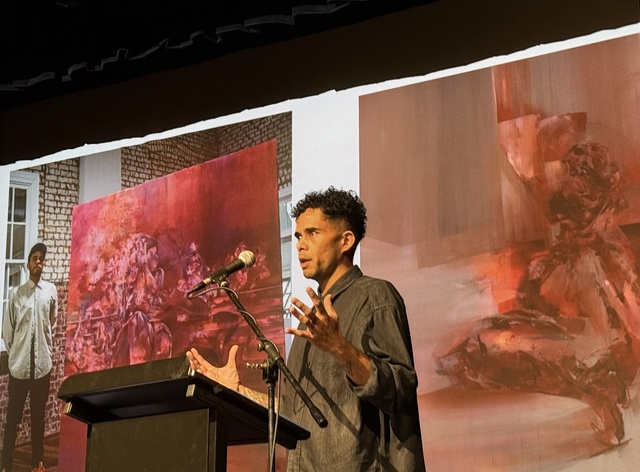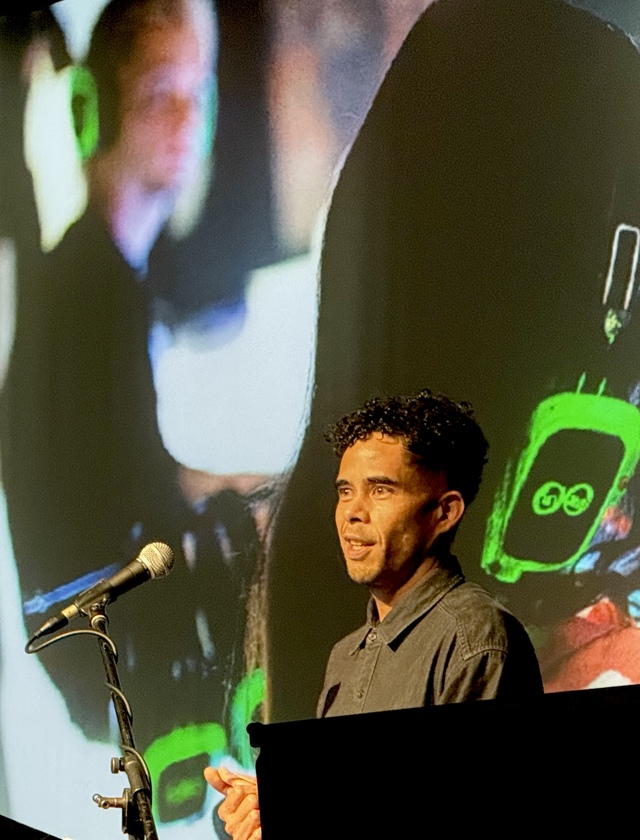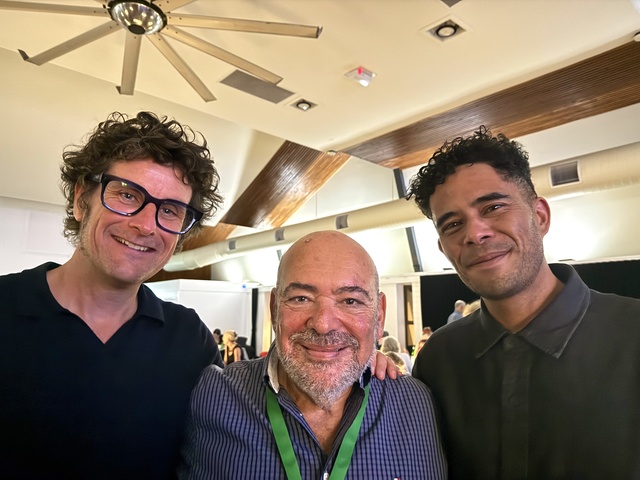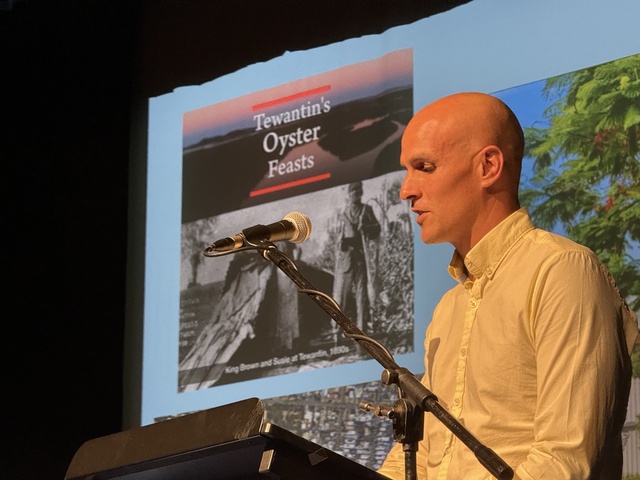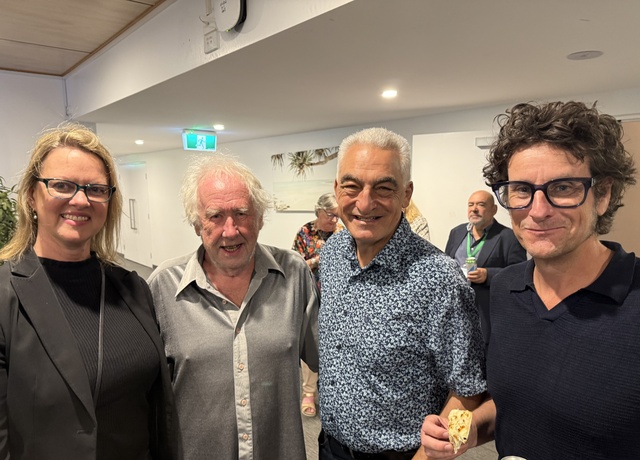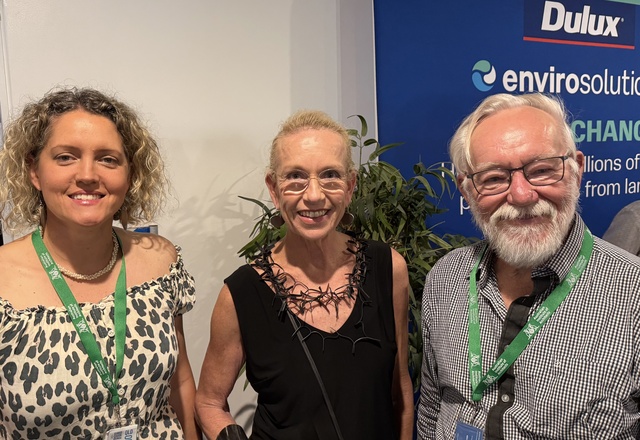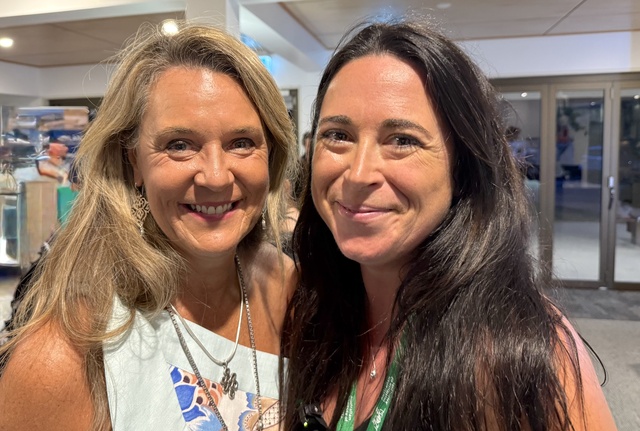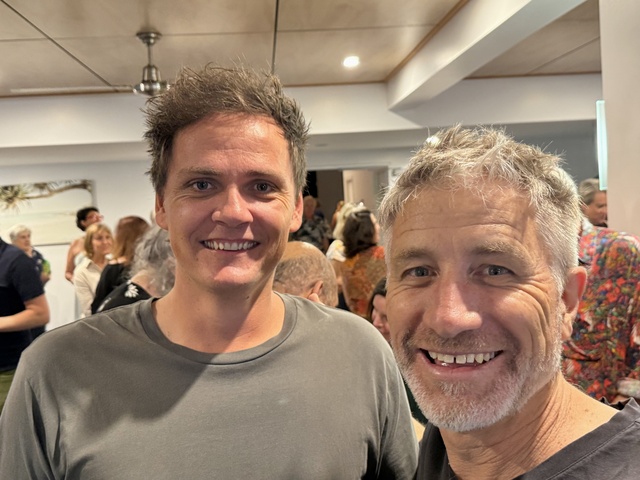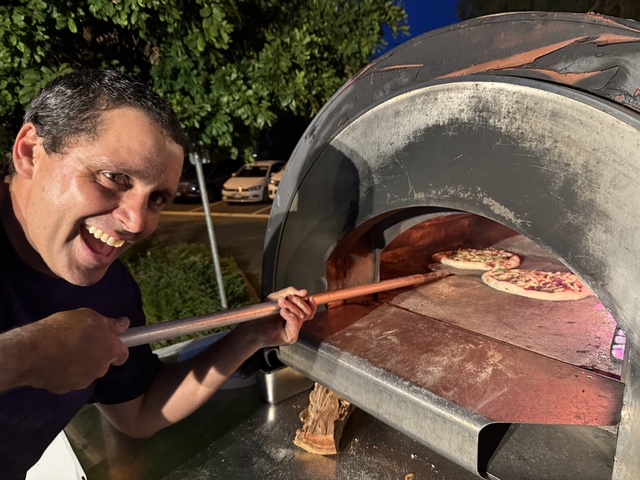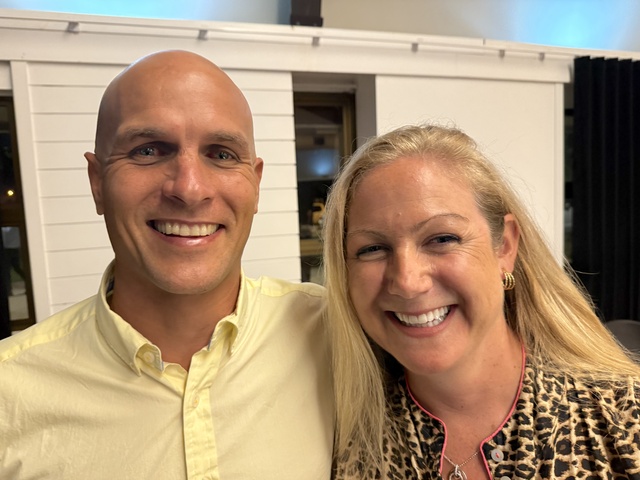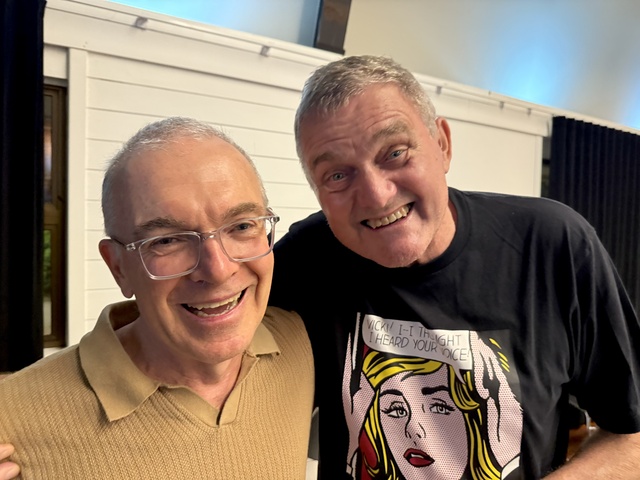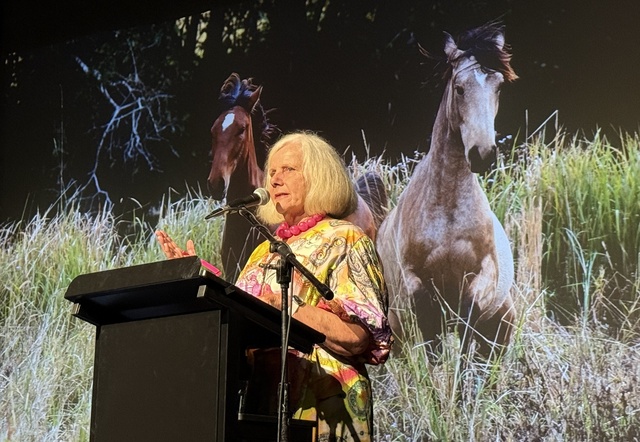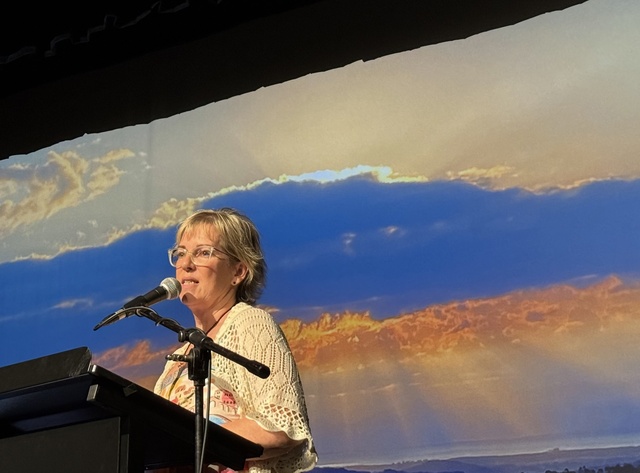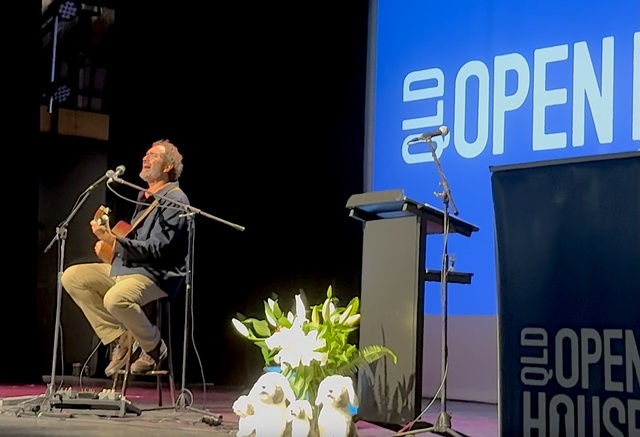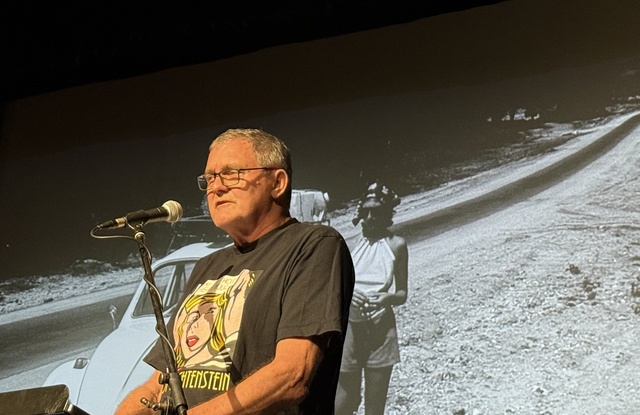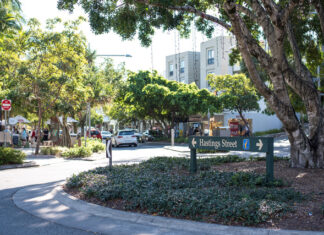What is Home? An intriguing question with so many answers.
Through heartfelt storytelling and community connection, a panel of speakers shared their personal experiences at Coolum Beach as part of the Sunshine Coast Open House 2025.
Following the success of the inaugural What is Home? in 2024, this year brought together seven speakers, exploring the meaning of home as sanctuary, place, identity, memory, and culture.
It was a night to hear what home means to people with different life experiences and diverse ways of living.
The event is part of the broader Sunshine Coast Open House 2025 program being held this weekend, showcasing architecture, design, and heritage across the region.
This year’s theme is resilience … and that came through strongly at Coolum Beach with a panel of such different backgrounds and journeys through life.
What is home? A place of shelter, a place to organise the day-to-day running of lives, a place to rest and to tell stories?
At Coolum we heard some raw and emotional responses about living on the streets, sharing spaces and places with friends. About the challenges of being part of the largest homeless group in Australia – women over 55 years of age.
The speakers ranged from architects and planners to artists and a rewilding specialist, a musician and songwriter to those working for social justice.
Brisbane artist, sculptor and storyteller Jordasche Gage; Lynn Scott of Moon Mountain Sanctuary at Eumundi; Noosa Open Studio president Trevor Purvis; David Gole of JDA Co architects; planner Jack Lewis; singer and songwriter Darren Percival; and Maggie Cairns of Better Together Housing at Nambour.
Opening the event was Sunshine Coast Council’s Cr Tim Byrnes, who has a long history of dealing with older people, younger people, people with disabilities, people living in poverty and those he me while having worked in Africa.
Some of his thoughts on “home’’ have been shaped from working in Zambia. It showed him that a house is not necessarily a home.
“People can have a house and not feel safe. At the same time a home is not necessarily a house.
“Many of the houses in Zambia are of mud brick, of plastic and recycled pieces of tin, of hessian bags and branches held together by creativity, agility, resilience, ingenuity, love, hard work and toil.
“They were homely and welcoming, generous, safe, kind, full of love and care.
“People create that sense of home, not with the building but when we use space and give it meaning.
“We connect to a sense of place. It can be the area as a whole, like here on the Sunshine Coast and Noosa which are made up of a series of different communities.
“Yet we have a strong sense of pride in that area. We even use that phrase: ‘We’re coming home.’
“It’s not just to your house. The idea for me is that home is a connection to bigger and deeper things than the built form.”
“It’s about being able to reflect what it means to be home, so that we can actually shape it from the outset.
For millennia the Kabi Kabi people have been forming and shaping homes in this area, he said.
“Houses that have been formed and shaped out of the natural materials of the area that they come from.
“They are adaptable and resilient, and have the ability to reinvent and reimagine, reshape those homes as the need arises.
“Places to meet together, create spaces where they could share ideas – where they could create and imagine a future where their families can thrive.”
Brisbane artist, sculptor and storyteller Jordasche Gage spoke about what home is rather than thinking in terms of architecture and design.
How space for someone isn’t determined by the floor and walls, but by the people who occupy the space – how they want to use it for meetings and conversations.
“I think understanding what spaces are used for is really warming, rather than just seeing a building and thinking that you can achieve certain outcomes.
“There are spaces that exist now but we’re finding that isn’t working. By using more natural influences, ideas and creative design based off nature, I think adds more to the human experience.
“If you go to the beach or are going to a forest, you feel the connection to that space you cannot find within the building. I think we need to look at that.”
Having grown up in a home and neighbourhood full of chaos and trauma, it has been a matter of Jordasche looking not for a place but a feeling of belonging.
“You’re not born into this world to be told that anything you do is wrong.
“Outside, with my friends we were doing graffiti, painting on canvases, skating – just sitting on rocks looking at mangroves and the sand crabs on the beach
“You sit with your feet in the sand and you squish it. It’s a reminder of how we can be so disconnected.
“Being displaced by family, I believe that at the end of the day we can talk about these things – not turn a blind eye to it.
“We haven’t lived unless we want to go home. And that can be any place.”
Maggie Cairns of Better Together Housing at Nambour brings together the most vulnerable and largest group of homeless people in Australia – women aged over 55.
“Home is within each and every one of us, even though at times we don’t feel like that. We feel like we are exiled from our own soul and own hearts.
“Yet we can feel at home under a tree, with someone we love, in your favourite pyjamas and jumping into bed – whatever it is for you.
“Through my own journey and 30 years of working in social justice, I really appreciate being able to bring a shining light to the situation of those who are not as well-off as some of us.
“There are many answers but one of them is that we need to create the longing and connection, and we need to listen to these women.
“We need to listen to the people who are experiencing such insecurity because they actually have the answers.
“We need 100 flowers to bloom – bring them together and they work as a team. Then they can connect – build belonging, community and find homes together.”
For Lynn Scott of Moon Mountain Sanctuary at Eumundi, it was important to look back and understand the energy lines that run across the country.
That should define how to treat the land.
In her own experience, re-wilding a property that was a degraded dairy farm, has brought energy back into the land.
“Our ancestors were connected to nature and that is fundamental in how we approach life.
“Other creatures can come to inhabit these spaces and that, in turn, brings about plants and trees to create an environment to sustain nature.
“We talk about resilience. It’s not about just recovering from things that have happened. Resilience is the connection between people and nature.
“That’s what we wanted out our home. It has led to nature coming to our home and us living in nature.”
Noosa Open Studios president Trevor Purvis started out in a second-hand Volkswagen and finished up travelling around the world.
He now considers Noosa his home.
Singer and songwriter Darren Percival started performing at kindergarten at the age of four. He has gone on to sing at festivals, in tin sheds, in tents and at concert halls. To him, home is always where there is song.
For architect David Gole, home has been finding a piece of land in the Sunshine Coast hinterland that has been completely cleared by previous generations. By slowly regenerating it, he has reconnected with places used by people perhaps thousands of years before Europeans arrived.
Planner Jack Lewis said it was a matter of understanding the concepts between physical places and the emotional, cultural and social relationships that people create and experience within a home.
“It’s a fundamental aspect of a human experience, of understanding who we are and where we belong.”
Jack grew up with a beach culture and football, and the family has lived in a house at Tewantin with strong historic links to the area.
However, when sports and cultural opportunities opened up for their children the family was drawn more and more to the city.
This either involved many hours in a car, sending a child to boarding school or living in an inner-city apartment.
They have chosen the latter … and that opens up a whole new dynamic. One that reflects younger generations.
What came through from the Coolum discussion night was that home is where the heart is.
It can be challenging to define, especially when it comes to the emotional and financial investment that can be placed in a dwelling.
An incredible amount of energy can be put in to trying to create a home that feels welcoming, calm – an enjoyable place to be.
Yet challenges exist. Health, domestic violence, addiction, strained parent-child relationships.
All of these things remind that home doesn’t need to be a place you’re trapped in. It is where you feel safe, loved, free, supported, and valued.

